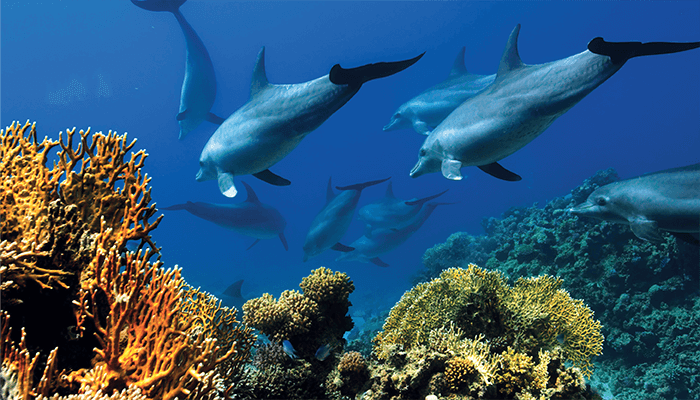Indo-Pacific bottlenose dolphins have been observed queueing up to rub themselves on corals and sponges in coral reefs – but, until now, no one quite knew why. In search of an answer, a group of researchers sampled three of the dolphins’ preferred coral and sponge species and found that they were releasing mucus. This led them to hypothesize that the behavior may be linked to active metabolites in the coral (1).
To test their theory, the researchers analyzed the mucus using a combination of high-performance thin-layer chromatography with on-surface assays and high-resolution mass spectrometry (2). “We found 17 biologically active substances with antimicrobial, antioxidant, hormonal, and toxic properties across all three invertebrate species,” says lead author Gertrude Morlock, Full Professor of Food Science at Justus Liebig University Giessen, Germany.

Gram-negative and Gram-positive bacterial bioassays revealed that the three invertebrate species were releasing antibacterial compounds that act against both types of bacteria. The authors also used well-known mammalian hormonal receptors in the bioassay to detect hormonal effects. Although all three species demonstrated antimicrobial properties, there were also clear differences – for example, the leather coral produced more hormonally active compounds.
“As a result of these findings, we dared to hypothesize that the bioactive molecules can have an effect upon skin contact,” says Morlock. “This may provide evidence of self-medication in dolphins.”
Why this particular analytical technique? According to Morlock, combining chemistry and biology on the same planar surface is extremely helpful in prioritizing important compounds among the thousands present in a natural sample. “This technique is also very matrix-tolerant, so the raw sample extract can be used,” she says. “It requires minimal sample preparation steps and is fast and cost-efficient.” The technique also calls for minimally invasive sampling; any other technique would have required a much larger sample volume to achieve the same results.
The researchers called for further research on vertebrate-invertebrate interactions in coral reefs and highlighted the need for interdisciplinary and hyphenated bioanalytical thinking, as well as the importance of conserving this essential habitat for marine life.
References
- GE Morlock et al., iScience, 25, 104271 (2022). DOI: 10.1016/j.isci.2022.104271.
- GE Morlock et al., Anal Chim Acta, 1180, 338644 (2021). DOI: 10.1016/j.aca.2021.338644.




